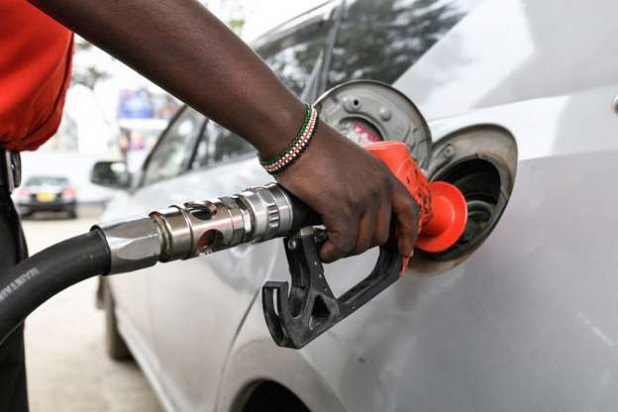Retail prices of fuel in Uganda continued to rise early this week, mainly attributed to the persisting high global prices of crude and cost of transportation.
The two market leaders Shell and TotalEnergies quoted a litre of petrol at 5,220 shillings while diesel stands at 4,800 a litre, an increase of an average 70 shillings in a week.
Smaller marketers like Stabex and Africa Oil have also raised the prices to 5,140 shillings per litre of petrol and 4,600 for diesel. And now there has been fears in Uganda that the situation could get worse with a looming scarcity, as a possible spillover from the crisis in Kenya.
However, officials at the Ministry of Energy and Mineral Development have allayed the fears, saying that the scarcity in Kenya will not affect the supplies or the prices in Uganda.
There have been reports from Western Kenya, of motorists crossing over into Uganda to buy fuel before going back, despite the high prices. Currently, in Kenya, a litre of petrol costs about 4,768 Uganda shillings or 155.11 in Kenyan currency.
However, the Kenyan price is subsidized by about 600 Uganda shillings per litre, since the government started implementing the Petroleum Act of 2019.
The law also allows the government to set a maximum price, with the current one being 135 Kenya shillings.
However, some rural areas like in Uasin Gishu and Machakos counties, a litre of petrol goes for between 150 and 200 shillings (4,600 to 6,000 Uganda shillings), according to reports. This however, has caused supply disruptions recently, with the government delaying to release the subsidy money to the companies, giving them an excuse to for the scarcity. The companies say they do not have cash to replenish stocks until the government pays them. However, the petroleum companies, including the Kenya Pipeline Company, have also been accused of hoarding the products, which has worsened the crisis.
“The western part was highly affected because the fuel comes from Mombasa and western is the other side of the country. It takes more than 12 hours for the fuel to reach Western,” says Joshua Ogure, a development worker and Journalist in Nairobi.
On Tuesday, the government announced it had released 8.2 billion Kenya shillings (250 billion Uganda shillings) in part payment of the due subsidy which amounts to 13 billion, adding that the situation should normalize before Friday.
However, the Association of Oil Marketers say the accumulated subsidy is more than 20 billion. The Petroleum department says it is investigating reports of hoarding and that culprits will be penalised since the law provides for such action.
Edwin Makori, a Certified Public Accountant says the governments should not be entirely to blame for the high fuel prices attributed to taxes, adding that the main factors are beyond their control. “Fuel prices are not dictated by local taxes alone but also the international market prices. The crisis between Ukraine and Russia also has an impact on this. It is a delicate balance for the CS even as he reads the budget,” says CPA Makori.
Kenyan politicians have been blaming their government for the scarcity and the high prices.
Vice President William Ruto wondered why “fuel prices are lower in Uganda than in Kenya where the product is imported through.” At another incident, Amani National Congress leader, Musalia Mudavadi, speaking on a radio station wandered why Uganda had fuel, and Kenya had scarcity. “We are seeing people lining up to get fuel in petrol stations. It last happened in the 1990s when we had price control.
Our neighbouring country Uganda has fuel all through yet their fuel passes through pipelines in Kenya. Then the government says we have a shortage of petrol. What is that?” Mudavadi wondered.
“Uganda should not be worried since the fuel is there and it only passes through Kenya,” said Ogure. This was re-echoed by Uganda National Oil Company, UNOC, which is also involved in the importation of petroleum products for sale to some marketing companies.
Big petroleum companies import their fuel directly from the international market, with more than half coming from the United Arab Emirates and India.
This is done under Kenya’s Open Tender System where the companies bid to import fuel and those that succeed, then sell to other marketers, who either did not bid, or did not succeed.
“Smaller companies in Uganda ‘tag along’ the big ones as they go for bidding. So, in their bidding, the big companies factor in the volumes to be taken by the smaller one on arrival of the consignment,” said an official at UNOC on condition of anonymity for fear of conflict of interest.
For that, he says what happens on the Kenyan market will not affect supply to Uganda significantly, because the companies import the fuel destined for Uganda.
That is not to say, however, that the prices of fuel in Uganda will not rise.
They could continue going up until the other factors that have been pushing them up, particularly world prices and high global transportation costs are dealt with.
Other events like a disruption of transportation in Kenya can also lead to a scarcity in Uganda, as was the case in 2007/08 during the post-election violence in Kenya.
-URN





